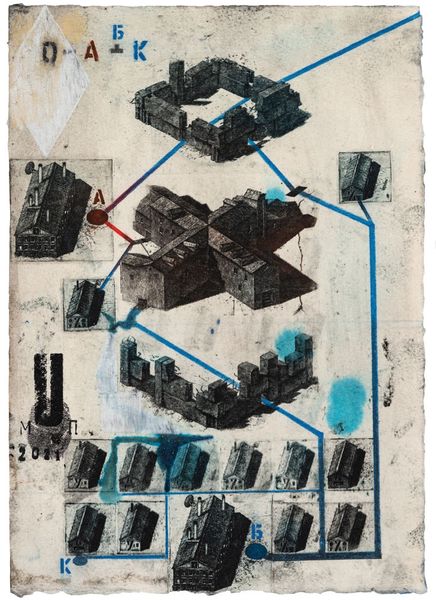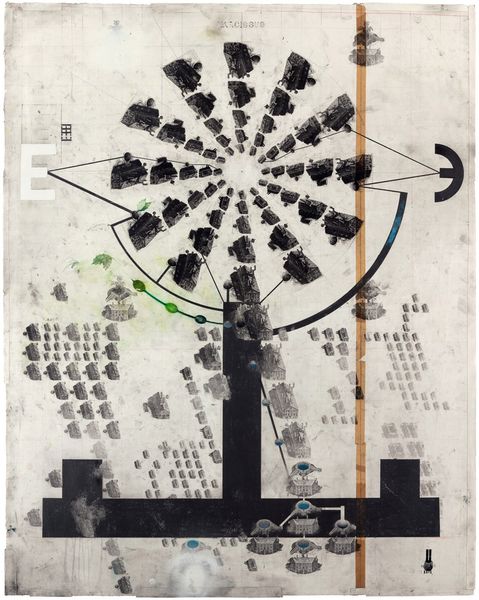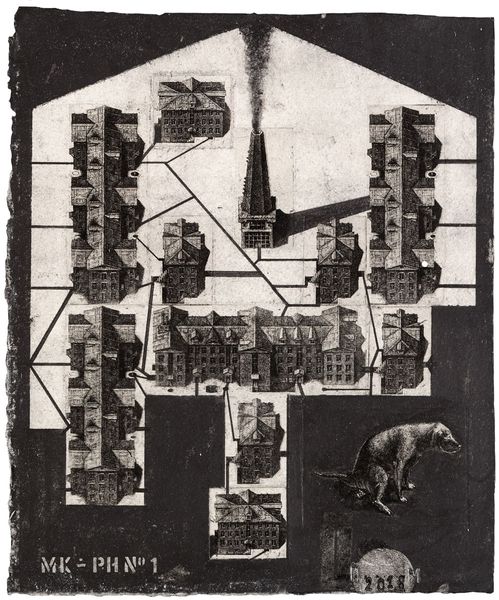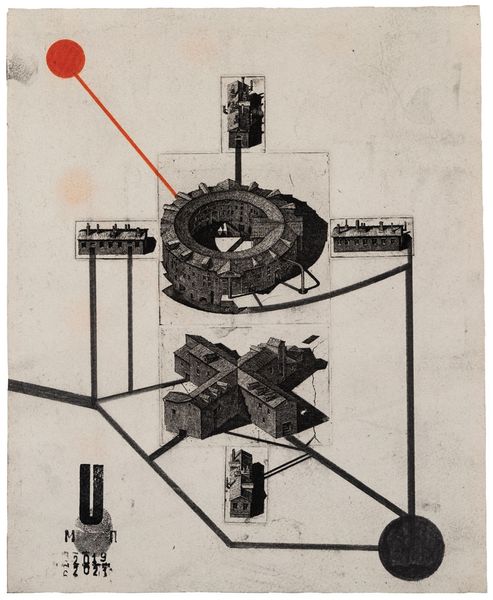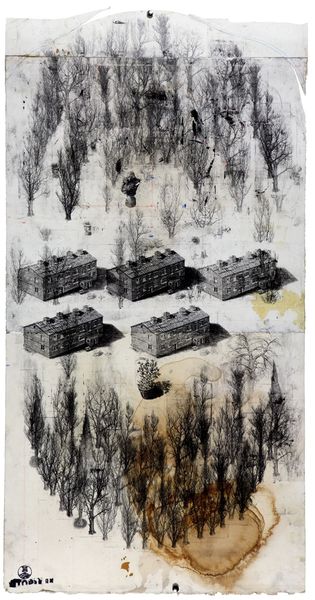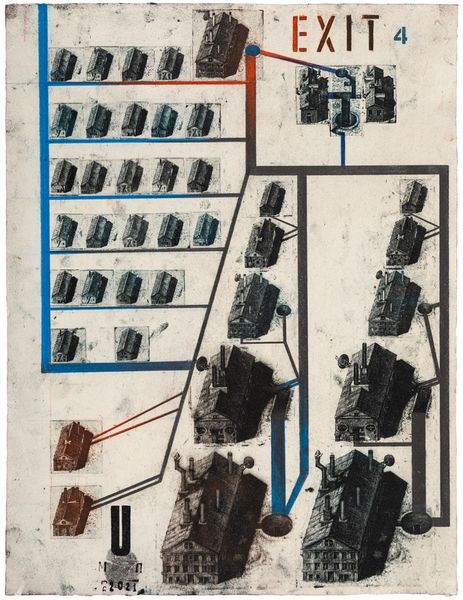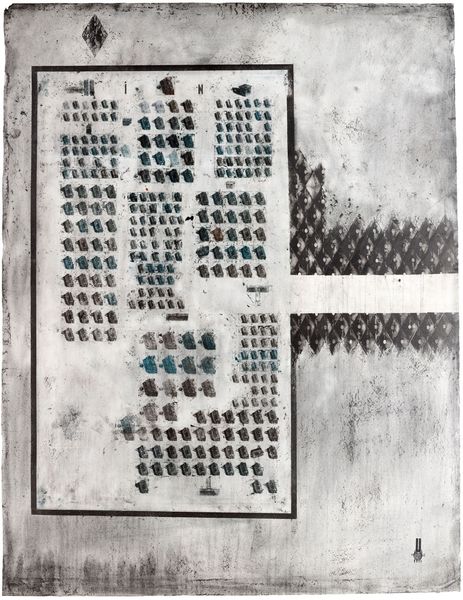
Dimensions: 160 x 120 cm
Copyright: Pavlo Makov,Fair Use
Curator: This work, “City with Freedom Square,” was created by Pavlo Makov in 2021, using ink and digital print on paper. What catches your eye first about it? Editor: A kind of unsettling precision. It looks like a blueprint, but for a soul-crushing urban landscape, almost dystopian with all of those repetitive shapes, each echoing the other, you know? A city that replicates without variation… that’s hardly freedom, is it? Curator: Well, Makov has a keen interest in the structure and the underpinnings of urban environments. To me, there’s a sense of interconnectedness here, like a network of… almost individual lives connected by these very strict lines. Editor: That "freedom square" implied in the title feels incredibly ironic, given the rigid geometry on display. Freedom isn’t usually associated with such regimentation. Is he suggesting our squares, our supposed public spaces, are anything but free? Are they surveilled, controlled? The coldness of the ink suggests surveillance, order, something ominous. Curator: Perhaps. It’s equally fascinating to me how Makov balances precision with… vulnerability. Look at the delicate washes of ink, the imperfections of the paper. The perfect forms want to suggest total control, yet there is also that suggestive small blue dot off to the side. To me it looks as though it may have gotten loose. It softens everything just slightly. Editor: And is it also fair to look at it, in some senses, politically? Thinking of Eastern Europe's experience, does the artwork subtly speak about authoritarian regimes masking themselves as progress? Or even a critique on contemporary urban planning, how so many feel impersonal and isolating? Curator: The artist being Ukrainian definitely makes you wonder if the ideas about order are really about control, whether physical or metaphysical. Either way, the implications are present in the work, if that’s what you are looking for. Editor: Indeed, Makov delivers on so many levels. From architectural rigor to philosophical provocation. What a poignant way to use these stark, industrial lines to get us pondering the very essence of our lived experiences. Curator: Absolutely, it is about how we shape, and are shaped by, our world and what is left that reminds us of what makes us, and it, alive. It stays with you, doesn't it? Editor: Lingers indeed, prompting more questions than it answers, which is always a sign of good art!
Comments
No comments
Be the first to comment and join the conversation on the ultimate creative platform.


